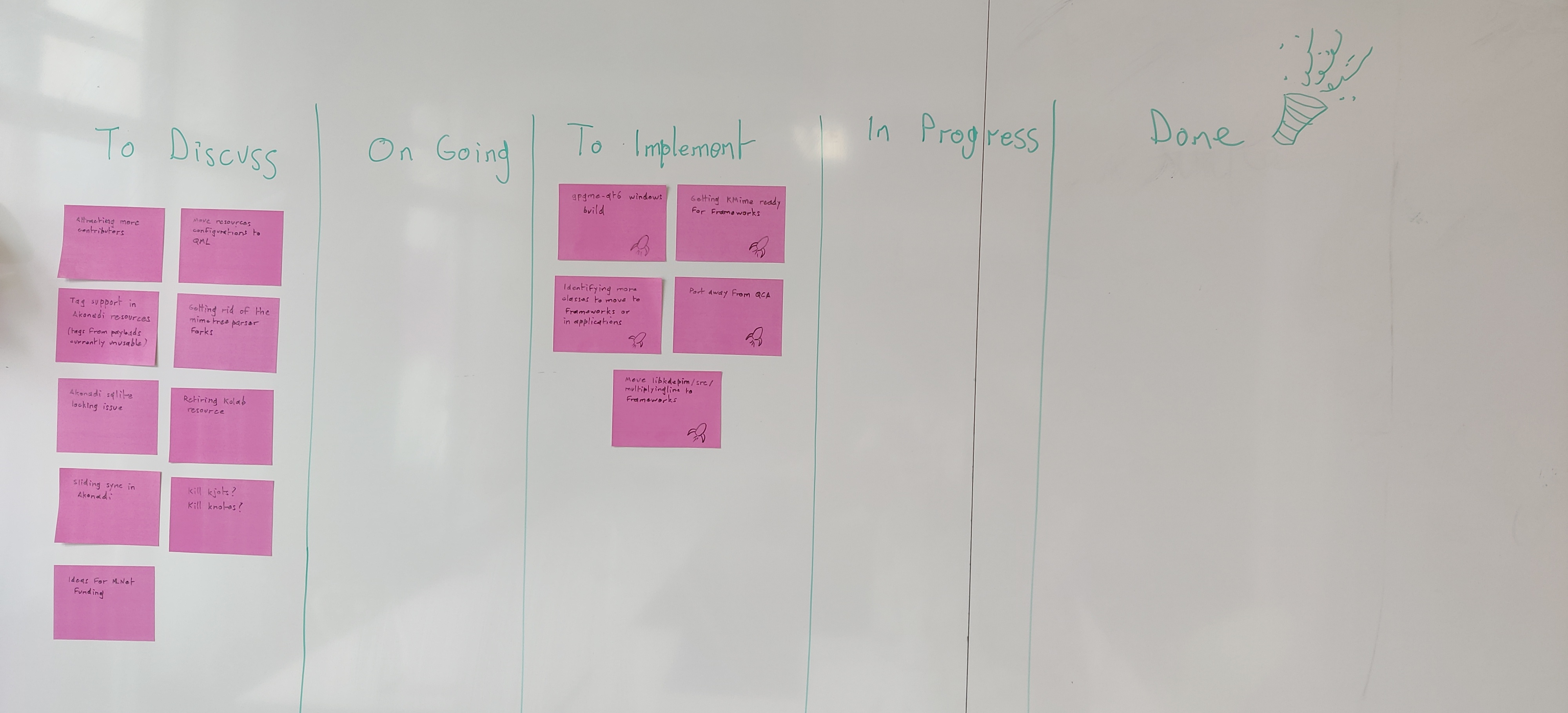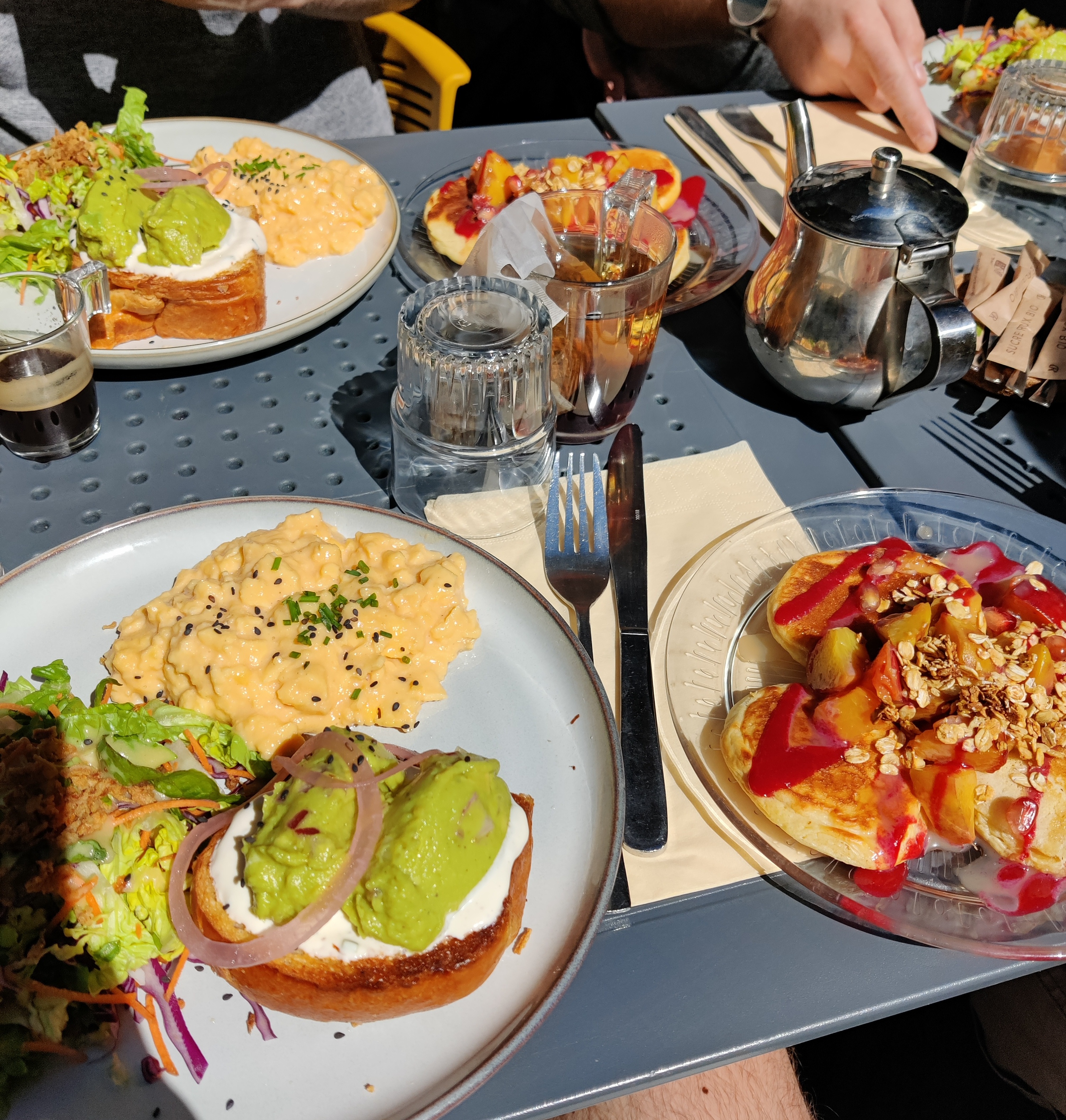Thursday, 20 June 2024
AI is the current mega trend, and soon our mobiles and laptops will have the functionality integrated, bringing it closer to our daily lives.
While new technology such as AI surely has its use, it can also be healthy to critically have a wider perspective. With AI we can for instance:
- Have emails written for us in a manner we perhaps don’t have the skills to present in person
- Generate texts, such as CVs or cover letters, that we perhaps cannot back up
- Generating texts that we don’t necessarily understand, can fact check or vouch for
My question is:
What do we human beings gain from that computers — on their own — are sophisticated?
It is a shift, where computers have gone from being a tool that assists, to taking a role on its own.
Here are areas where innovation is badly needed:
- Mental health has plummeted seemingly connected with social media and mobiles. Is it VR glasses we need?
- With the Google Effect, also known as digital amnesia, people tend to forget what they searched. Considering the wide spread usage of search engines in our lives, improvement in this area would be massive. (Scientific replication seems questionable and one can problematise)
- The fast food markets managed to dopamine-hack customers with their perfected products, and currently the social media are successful at that as well, again at the cost of customers’ health. A form of “intelligent digital dopamine administration”, as wishful as it is, would mean the technology’s destructive impact is reduced
- Reading comprehension on screens is less efficient, and probably the majority read most of their content on screens. This a big thing. Screens are massively marketed and used, but still they are largely less efficient than books. The causes could be many. Perhaps an invention of e-ink books would be a massive productivity boost.
The young IT entrepreneur is hailed and the markets value as they do. I believe it’s wise to question what directions they take us.
AI and other new technologies are exciting, but ensuring that computers are helpful and constructive for us, is imperative.
Wednesday, 19 June 2024
In 2021 I decided to take a break from contributing to KDE, since I felt that I’ve been losing motivation and energy to contribute for a while‚Ķ But I’ve been slowly getting back to hacking on KDE stuff for the past year, which ended in me going to Toulouse this year to attend the annual KDE PIM Sprint, my first in 5 years.
I’m very happy to say that we have /a lot/ going on in PIM, and even though not everything is in the best shape and the community is quite small (there were only four of us at the sprint), we have great plans for the future, and I’m happy to be part of it.
Day 0
The sprint was officially supposed to start on Saturday, but everyone arrived already on Friday, so why wait? We wrote down the topics to discuss, put them on a whiteboard and got to it.

We’ve managed to discuss some pretty important topics - how we want to proceed with deprecation and removal of some components, how to improve our test coverage or how to improve indexing and much much more.
I arrived to the sprint with two big topics to discuss: milestones and testing:
Milestones
The idea is to create milestones for all our bigger efforts that we work (or want to work) on. The milestones should be concrete goals that are achievable within a reasonable time frame and have clear definition of done. Each milestones should then be split to smaller tasks that can be tackled by individuals. We hope that this will help to make KDE PIM more attractive to new contributors, who can now clearly see what is being worked on and can find very concrete, bite-sized tasks to work on.
As a result, we took all the ongoing tasks and turned most of them into milestones in Gitlab. It’s still very much work in progress, we still need to break down many milestones to smaller tasks, but the general ideas are out there.
E2E Testing of Resources
Akonadi Resources provide “bridge” between Akonadi Server and individual services, like IMAP servers, DAV servers, Google Calendar etc. But we have no tests to verify that our Resources can talk to the services and vice versa. The plan is to create a testing framework (in Python) so that we can have automated nightly tests to verify that e.g. IMAP resource interfaces properly with common IMAP server implementations, including major proprietary ones like Gmail or Office365. We want to achieve decent coverage for all our resources. This is a big project, but I think it’s a very exciting one as it includes not just programming, but also figuring out and building some infrastructure to run e.g. Dovecot, NextCloud and others in a Docker to test against.
Day 1
On Saturday we started quite early, all the delicious french pastry is not going to eat itself, is it? After breakfast we continued with discussions, we dicussed tags support, how to improve our PR. But we also managed to produce some code. I implemented syncing of iCal categories with Akonadi tags, so the tags are becoming more useful. I also prepared Akonadi to be cleanly handle planned deprecation and retirement of KJots, KNotes and their acompanying resources, as well as planned removal of the Akonadi Kolab Resource (in favor of using IMAP+DAV).
One of the tasks I want to look into is improving how we do database transactions in the Akonadi Server. To get some data out of it, I shoved Prometheus exporter into Akonadi, hooked it up to a local Prometheus service, thrown together a Grafana dashboard, and here we are:

We decided to order some pizzas for dinner and stayed at the venue hacking until nearly 11 o’clock.
Day 2
On the last day of the sprint we wrapped up on the discussions and focused on actually implementing some of the ideas. I spent most of the time extending the Migration agent to extract tags from all existing events and todos already stored in Akonadi and helped to create some of the milestones on the Gitlab board. We also came up with a plan for KDE PIM BoF on this years Akademy, where we want to present out progress on the respective milestones and to give a chance to contributors to learn what are the biggest hurdles they are facing when trying to contribute to KDE PIM and how we can help make it easier for them to get involved.
Conclusion
I think it was a very productive sprint and I am really excited to be involved in PIM again. Can’t wait to meet up with everyone again on Akademy in September.
Go check out Kevin’s and Carl’s reports to see what else have they been up to during the sprint.
Did some of the milestones caught your eye, or do you have have any questions? Come talk to us in our matrix channel.
Finally, many thanks to Kevin for organizing the sprint, Étincelle Coworking for providing us with nice and spacious venue and KDE e.V. for supporting us on travel.
Finally, if you like such meetings to happen in the future so that we can push forward your favorite software, please consider making a tax-deductible donation to the KDE e.V. foundation.
Monday, 17 June 2024
People of the Internet,
While working on keystroke events, I realized my improvements to the event.change property were still inconsistent for certain Unicode characters. This led me to delve into code units, code points, graphemes, and other cool Unicode concepts. I found this blog post to be very enlightening.
Here’s an update on my progress over the past two weeks:
MRs merged:
- event.change : The change property of the event object now correctly handles Unicode, with adjustments to selStart and selEnd calculations. !MR998
- cursor position and undo/redo fix : Fixed cursor position calculations to account for rejected input text and resolved merging issues with undo/redo commands in text fields. !MR1011
- DocOpen Event implementation : Enabled document-level scripts to access the event object by implementing the DocOpen event. !MR1003
- Executing validation events correctly : Fixed a bug where validation scripts wouldn’t run after KeystrokeCommit scripts in Okular. !MR999
- Widget refresh functions for RadioButton, ListEdit and ComboEdit : Added refresh functions as slots for RadioButton, ListEdit, and ComboEdit widgets, aiding in reset functionality and script updates. !MR1012
- Additional document actions in Poppler : Implemented reading additional document actions (CloseDocument, SaveDocumentStart, SaveDocumentFinish, PrintDocumentStart, PrintDocumentFinish) in the qt5 and qt6 frontends for Poppler. !MR1561 (in Poppler)
MRs currently under review:
- Reset form implementation in qt6 frontend for Okular : Working on the reset form functionality in Okular, currently focusing on qt6 frontend details. !MR1564 (in Poppler)
- Reset form in Okular : Using the Poppler API to reset forms within Okular. !MR1007
- Fixing order of execution of events for text form fields : Addressing the incorrect execution order of certain events (e.g., calculation scripts) and ensuring keystroke commit, validation, and format scripts are evaluated correctly when setting fields via JavaScript. !MR1002
For the coming weeks, my focus will be on implementing reset forms, enhancing keystroking and formatting scripts, and possibly starting on submit forms. Let’s see how it goes.
See you next time. Cheers!
Sunday, 16 June 2024
This year again I participated to the KDE PIM Sprint in Toulouse. As always it was really great to meet other KDE contributors and to work together for one weekend. And as you might have seen on my Mastodon account, a lot of food was also involved.
Day 1 (Friday Afternoon)
We started our sprint on Thursday with a lunch at the legendary cake place, which I missed last year due to my late arrival.

We then went to the coworking space where we would spend the remaining of this sprint and started working on defining tasks to work on and putting them on real kanban board.

To get a good summary of the specific topics we discussed, I invite you to consult the blog of Kevin.
That day, aside from the high level discussion, I proceeded to port away the IMAP authentification mechanism for Outlook accounts away from the KWallet API to use the more generic QtKeychain API. I also removed a large dependency from libkleo (the KDE library to interact with GPG).
Day 2 (Saturday)
On the second day, we were greated by a wonderful breakfast (thanks Kevin).

I worked on moving EventViews (the library that renders the calendar in KOrganizer) and IncidenceEditor (the library that provides the event/todo editor in KOrganizer) to KOrganizer. This will allow to reduce the number of libraries in PIM.
- Remove KOrganizer plugins from kdepim-addons and move them instead to KOrganizer
- Do not use a complex plugin system for handling calendar invitation and instead provide the incidence editor as a binary and call it instead. (MR 1, MR 2 and MR 3)
For lunch, we ended up eating at the excellent Mexican restaurant next to the location of the previous sprint.
I also worked on removing the “Add note” functionality in KMail. This feature allow to store notes to emails following RFC5257. Unfortunatelty this RFC never left the EXPERIMENTAL state and so these notes were only stored in Akonadi and not synchronized with any services.
This allow to remove the relevant widget from the pimcommon library and the Akonadi attribute.
I also started removing another type of notes: the KNotes app which provided sticky notes. This application was not maintained anymore, didn’t work so well with Wayland. If you were using KNotes, to make sure you don’t loose your notes, I added support in Marknote to import notes from KNotes.

Finally I worked on removing visible Akonadi branding from some KDE PIM applications. The branding was usually only visible when an issue occurred, which didn’t help with Akonadi reputation.
We ended up working quite late and ordering Pizzas. I personally got one with a lot of cheese (but no photo this time).
Day 3 (Sunday)
The final day, we didn’t had any breakfast :( but instead a wonderful brunch.
Aside from eating, I started writing a plugin system for the MimeTreeParser which powers the email viewer in Merkuro and in Kleopatra. In the short term, I want to be able to add Itinerary integration in Merkuro but in the longer term the goal is to bring this email viewer to feature parity with the email viewer from KMail and then replace the KMail email viewer with the one from Merkuro. Aside from removing duplicate code, this will improve the security since the individual email parts are isolated from each other and this will makes it easier for the email view to follow KDE styling as this is just normal QML instead of fake HTML components.
I also merged and rebased some WIP merge requests in Marknote in preparation of a new release soon and reviewed merge requests from the others.
Last but not least
If you want to know more or engage with us, please join the KDE PIM and the Merkuro matrix channels! Let’s chat further.
Also, I’d like to thank again Étincelle Coworking and KDE e.V. to make this event possible. This wouldn’t be possible without a venue and without at least partial support in the travel expenses.
Finally, if you like such meetings to happen in the future so that we can push forward your favorite software, please consider making a tax-deductible donation to the KDE e.V. foundation.
Friday, 14 June 2024
This is the first blog post of my GSOC journey. I will be sharing my works and experiences here. Stay tuned for more updates. In this blog, I’ll be sharing my experiences of the first two weeks of GSOC, what are the works I did, what are challenges I faced and how did I overcome them ( Did I really overcome them :P ).
On my first week I tried to understand the codebase of discover first, via doing small changes. So, the first thing I added was a new way of verification of snap publishers which is officially supported by snapcraft. Snapcraft has two tiers of verification:
This is the release schedule the release team agreed on
https://community.kde.org/Schedules/KDE_Gear_24.08_Schedule
Dependency freeze is in around 4 weeks (July 18) and feature freeze one
after that. Get your stuff ready!
After three months, KDE’s Kirigami tutorial has been ported to Qt6.
In case you are unaware of what Kirigami is:
- Qt provides two GUI technologies to create desktop apps: QtWidgets and QtQuick
- QtWidgets uses only C++ while QtQuick uses QML (plus optional C++ and JavaScript)
- Kirigami is a library made by KDE that extends QtQuick and provides a lot of niceties and quality-of-life components
Strictly speaking there weren’t that many API changes to Kirigami. The most notable changes were:
Thursday, 13 June 2024
Hi! It has been over two weeks since the coding period began. In this blog post, I will provide a brief summary of my work during the first two weeks.
After spending some time reviewing the code, I decided to start by refactoring the existing code related to ASS format subtitles. This has two main goals: first, to enable Kdenlive to read as much information as possible from ASS subtitles (specifically, the features supported by libass) and load it into the memory; and second, to ensure that Kdenlive can save all this information back to the file. Since SubtitleModel already contains a significant amount of code for ASS format subtitles, my work mainly involved refining and expanding upon this existing code while maintaining compatibility.
So far, I have accomplished the following:
- Added initial support for reading and saving embedded fonts in ASS subtitles
- Optimized the storage method for subtitle styles
- Migrated from V4Style to V4+Style
Tasks still to be completed:
- Modify m_subtitleList to accommodate more information.
- Write unit tests for each feature
Once these steps are completed, we will have more comprehensive support for ASS format subtitles, marking the end of this phase of the ASS code refactoring. The next focus will be on refactoring the functionality for modifying subtitle styles. These two parts will be my primary focus for the next two weeks. Stay tuned!
A strange fact recently came into my purview – many users and developers don’t know what Open Source is.
Some time ago, there was a controversy regarding the Floorp web browser (a fork of Firefox) going closed source.
The cause for this was that some company forked Floorp and made a browser based on it. I’ll not comment on the irony that the author of a fork of a project complained that someone forked his project.
Obviously, this triggered a storm of negative reactions on quite a few platforms where fans of Free Software / Open Source software hang out.
The developer responded that this is just temporary, and that the browser will soon be Open Source again. After a while, the repositories became public again and all was fine.
The developer said that Floorp is again Open Source, the angry mob said good, the Floorp browser is again Open Source. And every discussion about Floorp got a plethora of comments that people should stop complaining, that Floorp is Open Source, and that the previous situation was just a misunderstanding.
Open Source
The term Open Source is well defined at opensource.org.
Making the source code of a program publicly available is not enough for something to be Open Source. Having an army of people saying that something is Open Source, is not enough for something to be Open Source.
If a license that the code is published under doesn’t conform to the criteria published on opensource.org, a program is not Open Source. A program whose license contains the following sentence, is, by definition, not Open Source:
You may not use or distribute this Software or any derivative works in any form for commercial purposes. Examples of commercial purposes would be running business operations, licensing, leasing, or selling the Software, or distributing the Software for use with commercial products.
– Floorp private components/LICENSE
This is strangely worded as it looks like you can not use the Floorp web browser to access, for example, a work e-mail account as that would be using it for commercial purposes. This is likely not what the license author intended – the intent of the license is to disallow creating commercial products by forking Floorp.
While it is a valid desire of the author not to have somebody else profit from his work, it is the thing that makes the Floorp web browser not Open Source.
You can call it ‘source available’, you can call it ‘fair code’ but you can not call it Open Source.
Update: A few days after this blog was published, Floorp moved the code from the private submodule to the main repository. So, it should be again Open Source. Let’s hope it remains like that.
Redefining Open Source
This blog post should have been written when the Floorp thing happened, but I thought this is just a random incident not worth the extra attention.
It seems I was wrong. It is something that people should start paying attention to.
A lot of people – developers and users alike, intentionally or not – misuse the term Open Source, and some of them like FUTO even go that far to redefine it and create their own incompatible The Open Source Definition that will suit their own purpose.
Open Source Confusion Cases
Now, the main purpose of this post isn’t for me to let off some steam, but to share a great project started by Dan Brown of attempting to find and list all projects which claim to be Open Source while their licenses say otherwise.
It can be found on his Github account.
Share your views to FSFE
Albert pointed out that FSFE is also interested in this topic:
The FSFE is looking for examples and thoughts about openwashing if you feel like it I’m sure they’ll welcome your input mastodon.social/@johas/112524760073638652

 FransE
FransE
 @pgandhi:matrix.org
@pgandhi:matrix.org GSoC
GSoC



 soumyatheman
soumyatheman


